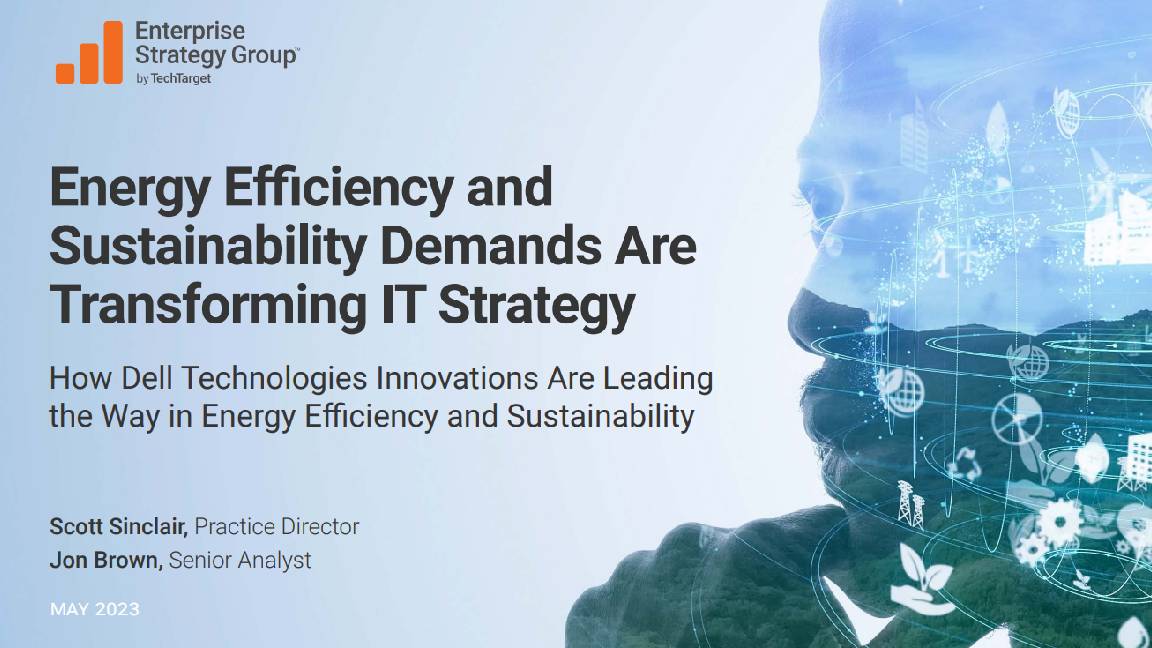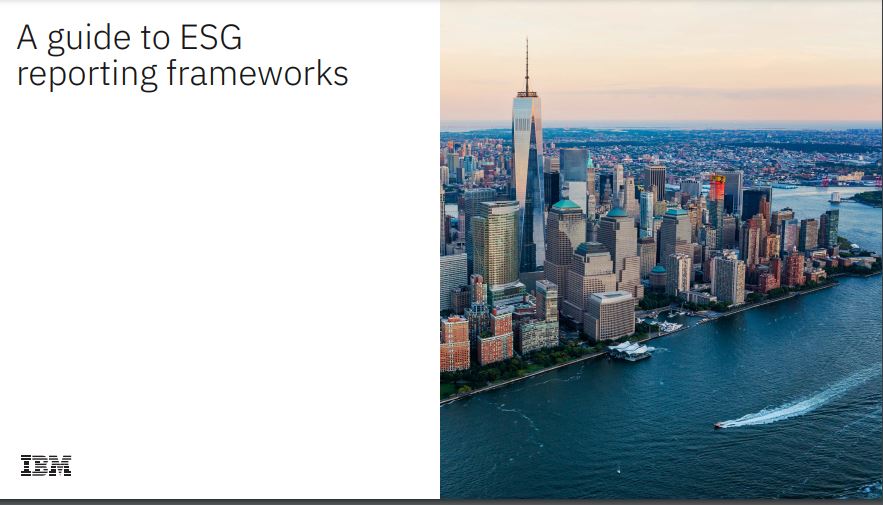How can we deal with digital pollution?
Data may seem ethereal, but everything from the biggest cloud to a single unopened email has an environmental cost


The changes the coronavirus pandemic has forced upon us are leading many to take a long look at the way we live and the effect it has on the environment. We’ve seen dramatic improvements to air quality thanks to so many people staying home, and there’s a lot of talk about how we might do things differently as lockdown restrictions ease and we create a “new normal”.
When it’s safe to go back to the office, we may find more people choose to continue working remotely for example, as many have discovered that they’re able to work productively from home.
Removing the daily commute is obviously good for the environment, but there is another issue that we need to consider: going digital does not equate to going carbon neutral. In fact, the Paris-based Shift Project says that “digital technology is currently doing more to fuel global warming than prevent it”.
What is digital pollution?
Dubbed ‘digital pollution’, the greenhouse gases that come from building, delivering and using digital technology currently make up 4% of global greenhouse emissions – double that of the global aviation industry.
Millions of physical servers in data centres around the world are running 24/7 in order to transmit all our data, and every year energy consumption from digital technology increases by 9%.
While consumer use is a big contributor – streaming services represent 20% of greenhouse gas emissions from digital devices – business also has a role to play in reducing our digital carbon footprint and needs to look towards more efficient ways of working and storing/sharing data.
Every time we use the Internet a small amount of carbon is being emitted. Searching for something on Google has a price, as each internet request represents 7g of carbon dioxide equivalent (CO2e). Sending or receiving an email emits 4g of CO2e and even unopened spam emails pollute, as they still use 0.3g of carbon dioxide.
Get the ITPro daily newsletter
Sign up today and you will receive a free copy of our Future Focus 2025 report - the leading guidance on AI, cybersecurity and other IT challenges as per 700+ senior executives
”Whilst that may not sound like much, the average office worker sends 120 emails a day, meaning that a business housing 50 employees generates 6,264kg (6.2 tonnes) of carbon emissions a year,” says James Harper, marketing manager at manufacturing firm Viessmann. “This is almost the equivalent of taking two return plane journeys a year from London to Hong Kong, which emits 6,800kg (6.8 tonnes) of CO2e between the four trips.”
Why should businesses care?
Taking responsibility for and lowering digital carbon footprints goes beyond corporate social responsibility (CSR); it’s good business sense.
Customers and employees alike are now very aware of the climate crisis, notes Vaughan Lindsay, CEO of ClimateCare, a profit for purpose environmental and social impact company. Most of all they’re very aware of the environmental responsibilities of the firms they work with, buy from and the organisations they are employed by.
“As such, they’re selecting organisations that fit with their own purpose-led principles. This ranges from organisations seeking to use greener data centres and communicating to their customer base through their CSR communications, to individuals who are increasingly buying on a matter of principle,” he says.
“Ultimately, as Mark Carney, the governor of the Bank of England, recently said; ‘Firms that align their business models to the transition to a carbon-neutral world will be rewarded handsomely; those that fail to adapt will cease to exist’.”
Steps you can take
Many businesses are already recording their digital pollution. The Climate Change Act 2008 set out a legally-binding commitment for the UK to reduce greenhouse gas emissions by at least 100% of 1990 levels by 2020, and under Streamlined Energy and Carbon Reporting (SECR), large businesses have a legal requirement to report and reduce their energy and greenhouse gas emissions.
Research by digital marketing agency Sustainable Results Labs found that many small businesses are also reporting on their annual carbon footprints as part of their commitment to reduce their environmental impact.
By collecting this information, businesses of all sizes are able to see what’s causing the most digital pollution and act accordingly. And there are many tools available to provide support in this area. For example, Microsoft recently launched a sustainability calculator to help businesses analyse the carbon emissions of their IT infrastructure, and applications such as Cleanfox remove unwanted and unnecessary emails from your inbox.
Ruth Smith, director of Sustainable Results Lab, has seen several IT services management departments aim to reduce their digital pollution through greater use of automation to reduce manual, inefficient ways of working.
“If you can automate a workflow you can reduce the number of emails you send, which not only saves time and money; it also reduces your digital carbon footprint. Ensure systems and processes are as efficient as possible. It’s about making sure that you make as much impact as possible through an evidenced-based approach to everything you do,” she notes.
Some businesses are going as far as to make management of digital pollution part of a role.
“We have a head of operations who’s responsible for managing how efficient we are and as part of that role is looking at our digital carbon footprint. When we’re looking at renewals, or coming to the end of contracts, there’s a big focus on finding sustainable solutions,” says Luke Tobin, commercial director of marketing agency Digital Ethos.
All steps make a difference, and there are a few simple changes businesses can make to start reducing their digital carbon footprint. These include advising staff to unsubscribe from spam/junk emails even if they don’t open them, use Wi-Fi over 4G and look towards – where suitable – using USB sticks or external hard drives to store files rather than in the cloud.
This is something implemented at Housebuyers4U, where staff continuously look for new ways to manage their digital carbon footprint.
“We do a few things such as encouraging workers to talk to each other rather than sending mass emails and use USBs to transfer some files rather than storing them digitally – this limits our use of the cloud,” says Paul Gibbens, marketing executive. “We also remove unused apps and software we don’t need, try to download rather than stream and focus on improving our SEO so we only attract the people who need or want our service.”
The role of data centres
Power hungry data centres are unlikely to become obsolete, but Lindsay points out that they do have a real opportunity here to raise the bar – highlighting Microsoft’s move to offset all its past and current emissions. He also notes that end users should ensure they only use ‘green’ data centres.
“Businesses will need to do their due diligence and research here. When speaking to data centres they should ask for efficiency certificates and green credentials, and find out whether they offset residual emissions.”
Businesses have a responsibility to educate their staff on digital pollution and instigate culture changes that will help manage and reduce digital pollution. Many might not be aware of the cost of sending that unnecessary ‘thank you’ email, but small changes across the board will help us move towards the UK’s net zero goal by 2050. It’s possible to meet it – but only if we start to take responsibility for the digital pollution we create today
Keri Allan is a freelancer with 20 years of experience writing about technology and has written for publications including the Guardian, the Sunday Times, CIO, E&T and Arabian Computer News. She specialises in areas including the cloud, IoT, AI, machine learning and digital transformation.
-
 Should AI PCs be part of your next hardware refresh?
Should AI PCs be part of your next hardware refresh?AI PCs are fast becoming a business staple and a surefire way to future-proof your business
By Bobby Hellard Published
-
 Westcon-Comstor and Vectra AI launch brace of new channel initiatives
Westcon-Comstor and Vectra AI launch brace of new channel initiativesNews Westcon-Comstor and Vectra AI have announced the launch of two new channel growth initiatives focused on the managed security service provider (MSSP) space and AWS Marketplace.
By Daniel Todd Published
-
 Beyond the upgrade: How to maximize IT investments and minimize waste
Beyond the upgrade: How to maximize IT investments and minimize wasteHow to maintain optimal performance and productivity with your fleet of hardware and stave off the next upgrade cycle for a bit longer
By ITPro Published
-
 Energy efficiency and sustainability demands are transforming IT strategy
Energy efficiency and sustainability demands are transforming IT strategywhitepaper How Dell Technologies innovations are leading the way in energy effiency and sustainability
By ITPro Published
-
 Energy efficiency and sustainability demands are transforming IT strategy
Energy efficiency and sustainability demands are transforming IT strategywhitepaper How Dell Technologies innovations are leading the way in energy effiency and sustainability
By ITPro Published
-
 Your guide to smarter printing: 2024 edition
Your guide to smarter printing: 2024 editionWhitepaper Making smarter printing simple for all businesses
By ITPro Published
-
 How to empower employees to accelerate emissions reduction
How to empower employees to accelerate emissions reductionin depth With ICT accounting for as much as 3% of global carbon emissions, the same as aviation, the industry needs to increase emissions reduction
By Fleur Doidge Published
-
 How much say does IT really have in sustainability initiatives?
How much say does IT really have in sustainability initiatives?ITPro Network Vendors are ready to proclaim their green credentials, but as members of the ITPro Network explain, making changes on the ground can be complex
By Jane McCallion Published
-
 ESG: Designing the ideal digital work experience for the next generation of innovators
ESG: Designing the ideal digital work experience for the next generation of innovatorsWhitepaper What users want, why it's critical to give it to them, and how the whole organization can benefit
By ITPro Published
-
 A guide to ESG reporting frameworks
A guide to ESG reporting frameworksWhitepaper Guidelines to assist with your approach to ESG reporting
By ITPro Published